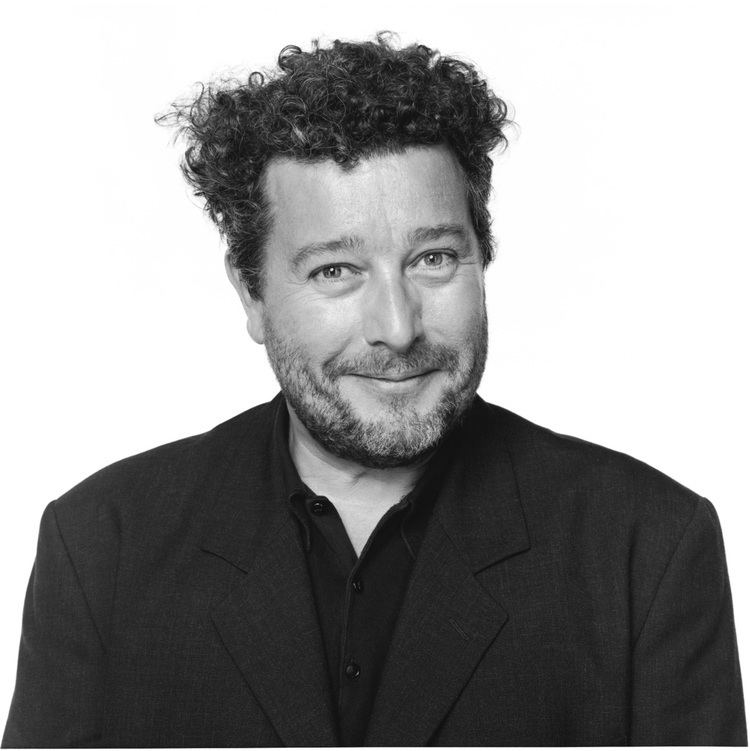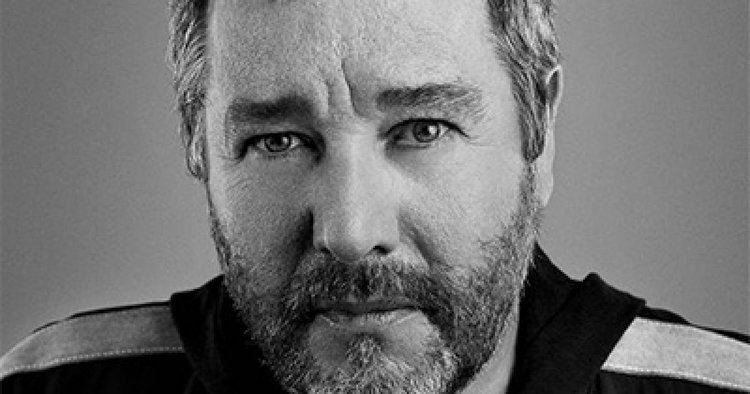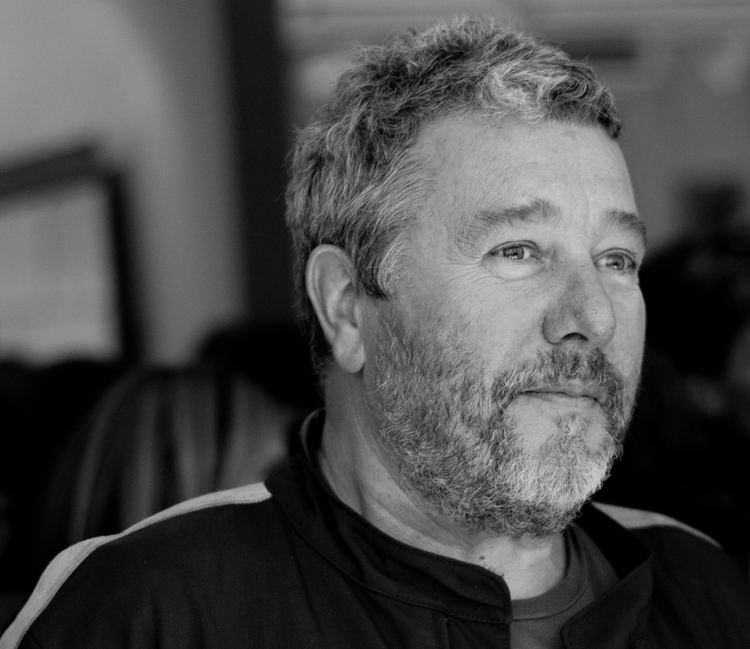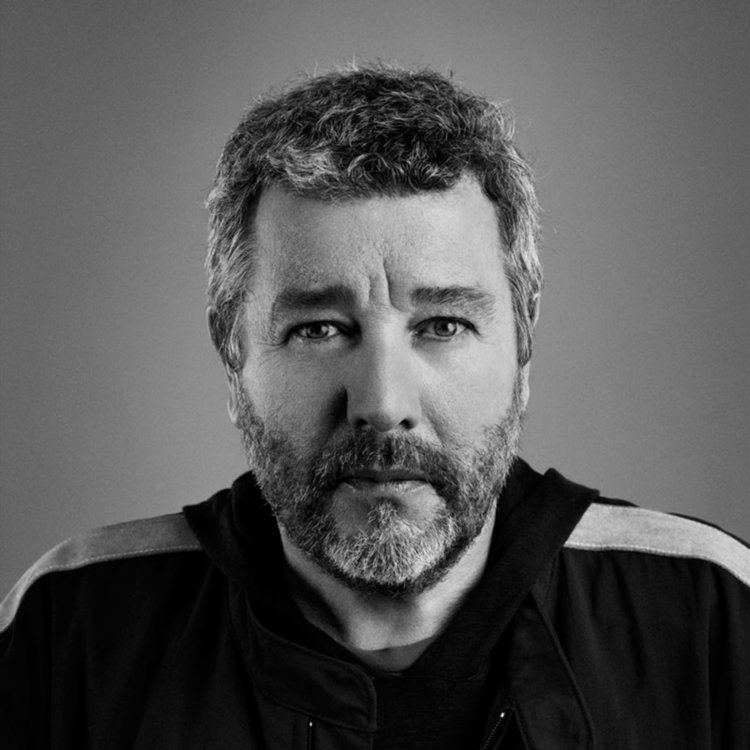Nationality French Education Ecole Camondo Role Designer | Name Philippe Starck Website Starck.com | |
 | ||
Spouse Jasmine Abdellatif Starck (m. 2007), Brigitte Laurent Starck (m. 1977–1992) Children K Starck, Oa Starck, Ara Starck, Lago Starck Parents Jacqueline Starck, Andre Starck Structures Similar People Marcel Wanders, Zaha Hadid, Ian Schrager, Al Gore, Thomas W Lamb | ||
Philippe starck design and destiny
Philippe Starck (born January 18, 1949) is a French designer known since the start of his career in the 1980s for his interior, product, industrial and architectural design including furniture.
Contents
- Philippe starck design and destiny
- The star philippe starck and the social role of design arts 21
- Career
- Starck Product
- Hotels
- Restaurants
- Yachts
- Objects
- Other projects
- Democratic design
- Political messaging
- References

The star philippe starck and the social role of design arts 21
Career

The son of an aeronautical engineer, Starck studied at the École Camondo in Paris. An inflatable structure he imagined in 1969 was a first incursion into questions of materiality, and an early indicator of Starck's interest in where and how people live. In the same year, Pierre Cardin appointed Starck as the art director of his furniture sector.
Starck Product

While working for Adidas, Starck set up his first industrial design company, Starck Product – which he later renamed Ubik after Philip K. Dick's novel – and began working with manufacturers in Italy – Driade, Alessi, Kartell – and internationally, including Austria's Drimmer, Vitra in Switzerland and Spain's Disform. His concept of democratic design led him to focus on mass-produced consumer goods rather than one-off pieces, seeking ways to reduce cost and improve quality in mass-market goods.

In 1983, French President François Mitterrand, on the recommendation of his Minister of Culture, Jack Lang, chose Starck to refurbish the president's private apartments at the Élysée. The following year he designed the Café Costes.
Starck's output expanded to include furniture, decoration, architecture, street furniture, industry (wind turbines, photo booths), bathroom fittings, kitchens, floor and wall coverings, lighting, domestic appliances, office equipment such as staplers, utensils (including a juice squeezer and a toothbrush), tableware, clothing, accessories (shoes, eyewear, luggage, watches) toys, glassware (perfume bottles, mirrors), graphic design and publishing, even food (Panzani pasta, Lenôtre Yule log), and vehicles for land, sea, air and space (bikes, motorbikes, yachts, planes). The buildings he designed in Japan, starting in 1989, went against the grain of traditional forms. The first, Nani Nani, in Tokyo, is an anthropomorphic structure, clad in a living material that evolves over time. The thesis being: design should take its place within the environment but without impinging on it; an object must serve its context and become part of it.
A year later he designed the Asahi Beer Hall in Tokyo, a building topped with a golden flame. This was followed in 1992 by Le Baron Vert office complex in Osaka. Starck's buildings, while dedicated to work, are no less instilled with life and its constant effervescence. In France he designed the extension of the École Nationale Supérieure des Arts Décoratifs (ENSAD) in Paris (1998).
The Alhondiga, a more recent project, is a 43,000 sq. m culture and leisure venue in Bilbao that opened in 2010. Starck, who loves ships and the sea, designed the new infrastructure for the Port Adriano harbour on the south-west bay of Palma de Mallorca, and was also artistic director for the interior. It opened in April 2012. He also designed Steve Jobs's yacht, Venus, which launched in October 2012.
Hotels
For the past thirty years Philippe Starck has been designing hotels all over the world, including the Royalton in New York in 1988, the Delano in Miami in 1995, the Mondrian in Los Angeles, the St Martin's Lane in London in 1999, the Sanderson, also in London, in 2000, and the complete 2001 renovation of the historic Clift in San Francisco with its updated art-deco bar, the Redwood Room. In South America, Philippe Starck designed the inside and outside of the Hotel Fasano in Rio de Janeiro in 2007 using materials such as wood, glass and marble. He then turned his attention to luxury hotels: in 2008, Hôtel Meurice and the Royal Monceau in 2010.
From 1990, Philippe Starck has worked to democratize quality "designer" hotels, beginning with the Paramount in New York. Offering rooms at $100/night, it became a classic in its genre. In 2008, Starck brought this humanist concept to Paris as the Mama Shelter. A second Mama Shelter opened in Marseille in 2012. In April 2015, Mama Shelter had six hotels with new locations in Bordeaux, Istanbul, Los Angeles and Lyon.
In 2010, Philippe Starck opened the Co(o)riche Hotel at the Dune du Pyla.
In North America, in the 2000s, Philippe Starck with entrepreneur Sam Nazarian created the concept for SLS, a chain of luxury hotels. The Bazaar lobby at SLS Hotel in Beverly Hills quickly became a public space with its tapas restaurants, Norwegian health bar, pâtisserie and a Moss concept store.
Restaurants
Philippe Starck has several restaurants to his credit: Bon (2000), Mori Venice Bar (2006) and Le Paradis du Fruit (2009) in France, and the notable launch of Katsuya in Los Angeles in 2006, the first in a series of Japanese restaurants. The A'trego opened in Cap d'Ail in 2011. He designed the interior and exterior of Ma Cocotte, a restaurant that launched in September 2012 at the Saint-Ouen flea market near Paris. In 2013, he designed Miss Ko, an Asian-centric concept restaurant in Paris.
In November 2011, Lodha Group appointed Phillippe Starck for "yoo inspired by Starck", to design the residential development at New Cuffe Parade, Mumbai.
Yachts
Objects
Other projects
In November 2012, Starck published his first book of interviews, Impression d'Ailleurs, with Gilles Vanderpooten. In it, he expresses his view of the challenges facing the world to come – ecology, solidarity, youth, science – and, as a humanist, suggests ways we can make a difference.
His work is seen in the collections of European and American museums, including the Musée National d'Art Moderne (to which he has donated several pieces, in particular prototypes) the Musée des Arts Décoratifs in Paris, the MOMA and the Brooklyn Museum in New York City, the Vitra Design Museum in Basel and the Design Museum in London. More than 660 of his designs were inventoried in French public collections in 2011.
Philippe Starck was the first designer to participate in the TED Talks (Technology, Entertainment & Design).
Alongside his work Philippe Starck partnered with Moustache Bikes for the M.A.S.S. (Mud, Asphalt, Sand and Snow). A portfolio of four e-bikes that use a Bosch electrical engine and battery pack.
Starck helped design the Xiaomi Mi MIX smartphone, notable for having a 6.4-inch "whole surface screen".
Democratic design
Through his "democratic design" concept, Starck has campaigned for well-designed objects that are not just aimed for upper-tiered incomes. He has expressed this as a utopian ideal, approached in practice by increasing production quantities to cut costs and by using mail-order, via Les 3 Suisses. In January 2013 he redesigned the Navigo travel pass.
One of the ways Philippe Starck has economized costs for the public, is his plastic-furniture line, producing pieces such as the Kartell Louis Ghost chair, over a million of which have been sold. He has also been involved in the development of Fluocaril toothbrushes to bathroom fittings for Duravit, Hansgrohe, Hoesch and Axor, from Alessi's Juicy Salif lemon squeezer to Zikmu speakers, Zik headphones by Parrot, Laguiole knives, Starckeyes glasses by Mikli and the Marie Coquine lamp for Baccarat.
Political messaging
Sometimes pointed political messages can be found in projects, such as the subversive Gun Lamp (Flos, 2005), the Superarchimoon floor lamp (Flos, 2000), in fact a giant architect's lamp standing 217 centimetres high, the Haaa!!! and Hooo!!! lamps he imagined with the American artist Jenny Holzer (Flos/Baccarat, 2009) and the chandeliers in the Darkside collection, featuring the Zenith chandelier (Baccarat, 2005).
With environment and ecological concerns, he created the Good Goods catalogue with La Redoute. He also set up AOA, an organic food company. His latest eco-friendly designs are the V+ Volteis electric car, the Pibal bike for the city of Bordeaux, Zartan chairs for Magis and Broom by Emeco.
